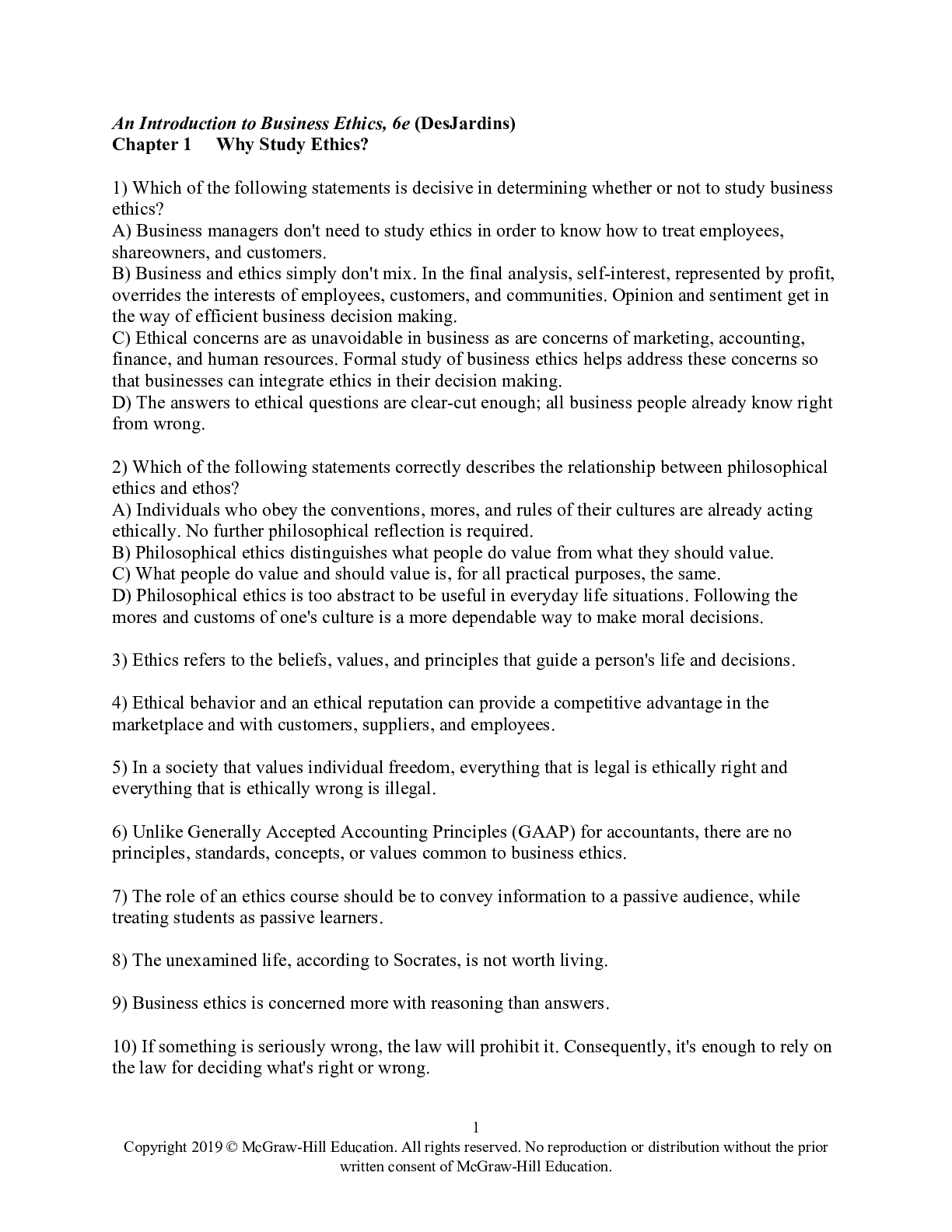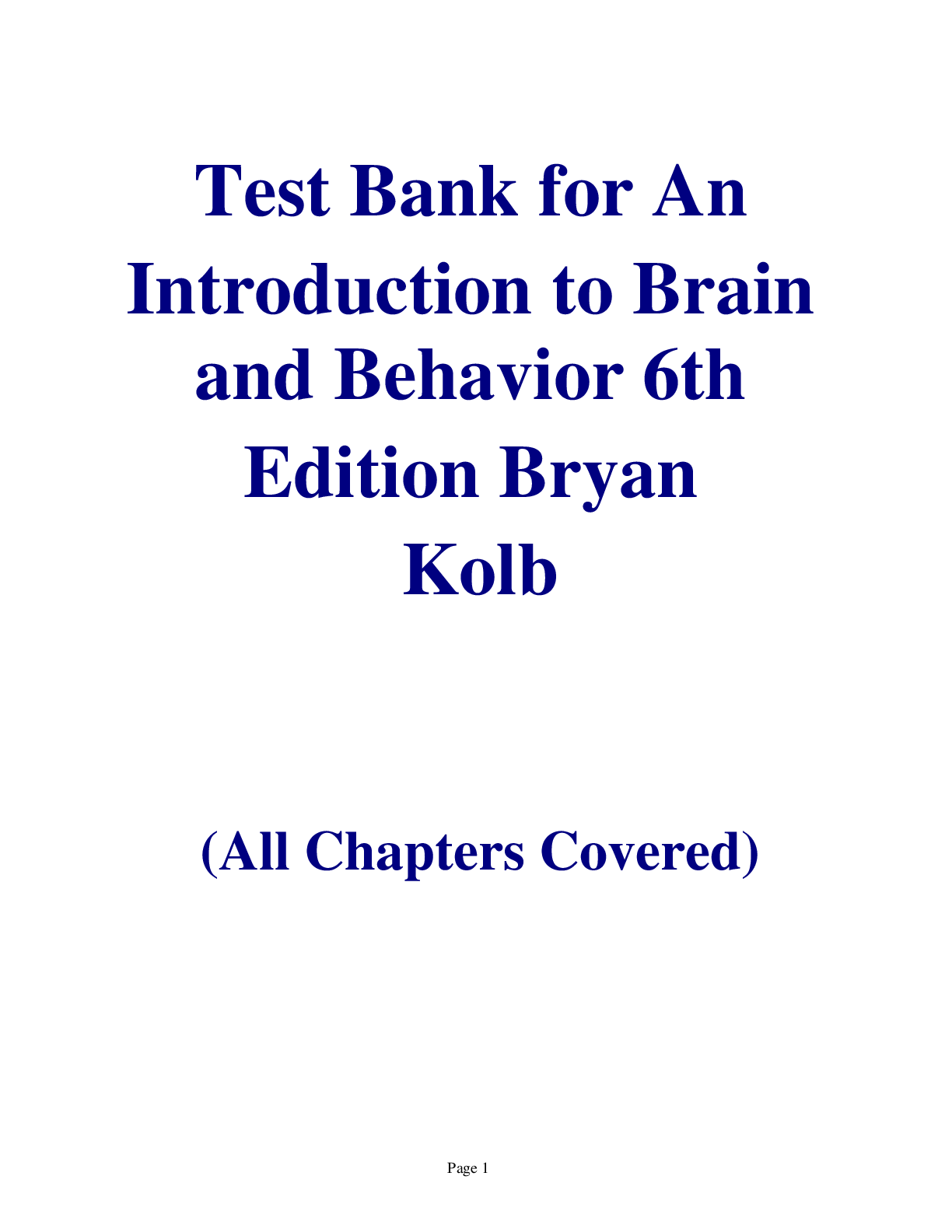Health Care > TEST BANKS > Test Bank for An Introduction to Brain and Behavior 6th Edition Bryan Kolb, Ian Q. Whishaw, G. Camp (All)
Test Bank for An Introduction to Brain and Behavior 6th Edition Bryan Kolb, Ian Q. Whishaw, G. Campbell Teskey
Document Content and Description Below
Chapter 1 – What are the origins of Brain and Behaviour? 1. Brain abnormalities can be related to: A) 500 disorders. B) 1000 disorders. C) 1500 disorders. D) more than 2,000 disorders. 2. All ... the nerve processes radiating out beyond the brain and spinal cord as well as all the neurons outside the brain and spinal cord constitute the: A) nervous system. B) central nervous system. C) peripheral nervous system. D) external nervous system. 3. Which is NOT part of the peripheral nervous system? A) sensory receptors in the skin B) connections to motor neurons C) sensory and motor connections to internal organs (e.g., the stomach) D) the spinal cord 4. The set of brain structures responsible for most of our unconscious behaviors is called: A) the cerebral hemisphere. B) the brainstem. C) the cerebrum. D) the cerebellum. 5. The postulation that we make subliminal movements of our larynx and muscles when we imagine was expounded by: A) D. O. Hebb. B) Edmond Jacobson. Page 2 C) Irenäus Eibl-Eibesfeldt. D) Fred Linge. 6. “Behavior consists of patterns in time” is a definition of behavior expounded by: A) D. O. Hebb. B) Edmond Jacobson. C) Irenäus Eibl-Eibesfeldt. D) Fred Linge. 7. Patterns in time can be made up of: A) movements. B) thinking. C) both movements and thinking. D) neither movements nor thinking. 8. Animals with smaller brains and simpler nervous systems have mostly behaviors, whereas animals with larger brains and more complex nervous systems have mostly behaviors. A) learned; inherited B) inherited; learned C) innate; inherited D) learned; innate 9. Crossbill birds have a beak that is designed to eat pine cones. If we trim the beak, the behavior disappears. This example illustrates: A) fixed behavior. B) flexible behavior. C) learned behavior. D) adaptive behavior. 10. The sucking response observed in newborn human infants is an example of a(n): A) learned response. Page 3 B) inherited response. C) flexible response. D) adaptive response 11. Which statement is the MOST accurate? A) Nonhuman animals have mostly inherited behavior and are little influenced by learning. B) Humans share many inherited behaviors but are mostly influenced by learning. C) Unlike nonhuman animals, humans share very few inherited behaviors and are mostly influenced by learning. D) Unlike nonhuman animals, humans' behavior is totally learned. 12. The hypothesis that the psyche is responsible for behavior was expounded by: A) Charles Darwin. B) René Descartes. C) Aristotle. D) Socrates. 13. Mentalism is: A) the study of the mind. B) mental imagery. C) the notion that the mind is responsible for behavior. D) another word for mindfulness. 14. The is a nonmaterial entity that is responsible for intelligence, attention, awareness, and consciousness. A) brain B) heart C) mind D) conscience Page 4 15. The notion that the mind resides in the pineal body comes from: A) Charles Darwin. B) René Descartes. C) Aristotle. D) Socrates. 16. According to the philosophy of dualism: A) the body influences the mind. B) the pineal body is the mind. C) the pineal body influences the body by directing fluids from the ventricles to the muscles. D) the pineal body is the mind and influences the body by directing fluids from the ventricles to the muscles. 17. Subsequent research indicated that the pineal body was responsible for rather than controlling human behavior. A) vision B) problem solving C) movement D) biological rhythms 18. The difficulty in explaining how a nonmaterial mind can influence a material body is called: A) the mind problem. B) the mind-body problem. C) the brain problem. D) the psyche problem 19. Descartes's followers would argue that: A) the mind and the body are separate at birth. B) humans and very few other animals have minds. C) young children do not have minds. Page 5 D) the mentally ill have minds. 20. The notion that all behavior can be explained by the workings of the brain is commonly referred to as: A) psychology. B) experimentalism. C) materialism. D) dualism. 21. The notion that all living things are related was put forward by: A) Charles Darwin. B) Alfred Russel Wallace. C) neither Charles Darwin nor Alfred Russel Wallace. D) both Charles Darwin and Alfred Russel Wallace. 22. The notion that differential success in the reproduction of characteristics results from interactions between organisms and their environment is known as: A) natural selection. B) genetic theory. C) biological theory. D) innate behavior. 23. Images of blood flow in the brain in monkeys have demonstrated that: A) humans and monkeys use different brain areas for language. B) humans and monkeys use the same brain areas for language. C) monkeys show no brain activation for language because they cannot understand language. D) None of the answers is correct. 24. Individual variation in plants and animals was first explained by: A) Charles Darwin. Page 6 B) Gregor Mendel . C) neither Charles Darwin nor Gregor Mendel. D) both Charles Darwin and Gregor Mendel. 25. The study of how genetic expression is related to the environment and experience is known as: A) genotyping. B) phenotyping. C) epigenetics. D) environmental genetics. 26. Neuroscientists study the nervous systems of other animals such as slugs, snails, fruit flies, rats and monkeys because: A) if all animals are related then all nervous systems are related and we can learn about the human brain by studying other animals. B) all animals' nervous systems are different, which means that we need to study each animal separately in order to understand how their specific nervous system works. C) the mind and the body are separate which means that we need to study a variety of different animals to see how their minds work. D) None of the answers is correct. [Show More]
Last updated: 2 years ago
Preview 1 out of 330 pages

Buy this document to get the full access instantly
Instant Download Access after purchase
Buy NowInstant download
We Accept:

Reviews( 0 )
$17.00
Can't find what you want? Try our AI powered Search
Document information
Connected school, study & course
About the document
Uploaded On
Feb 04, 2023
Number of pages
330
Written in
Additional information
This document has been written for:
Uploaded
Feb 04, 2023
Downloads
0
Views
94

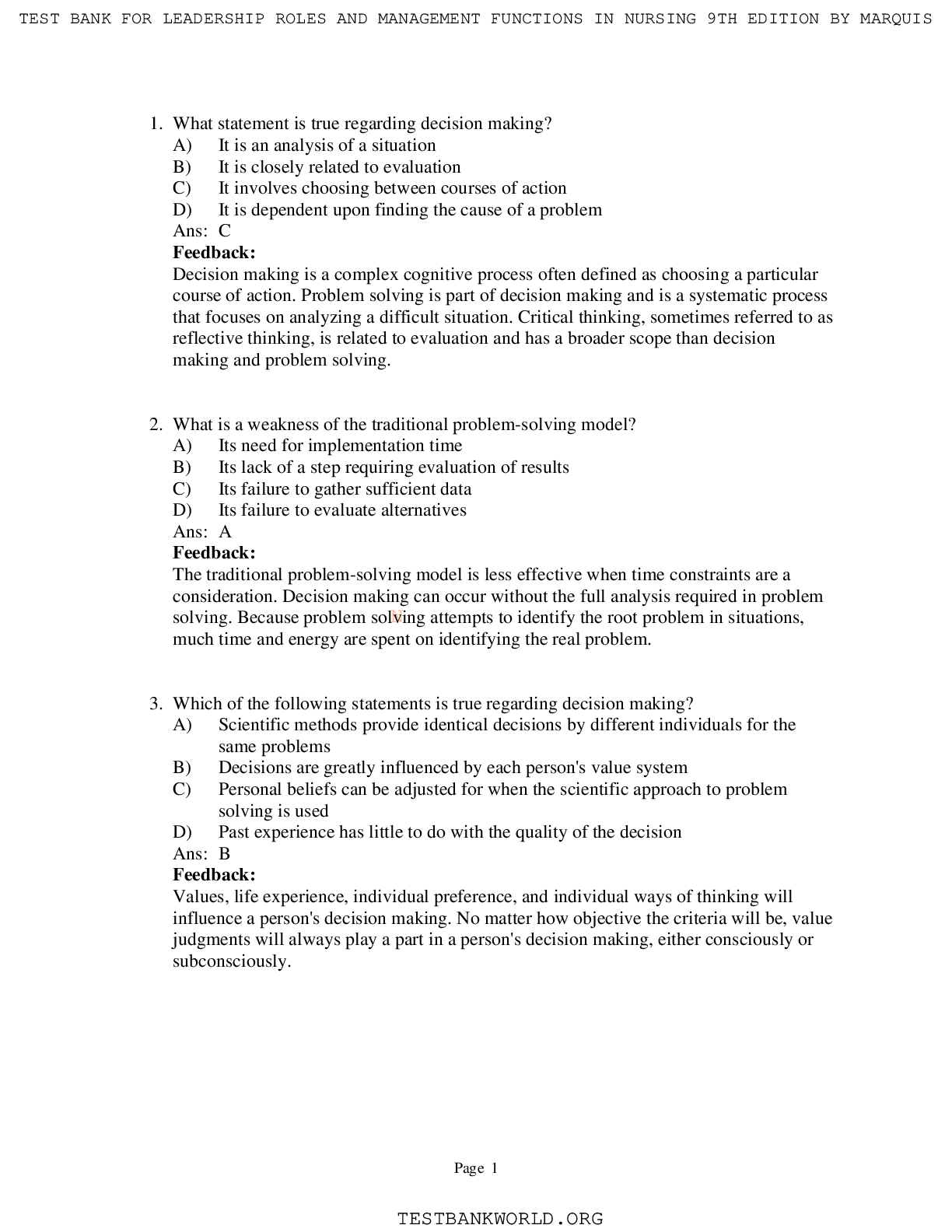

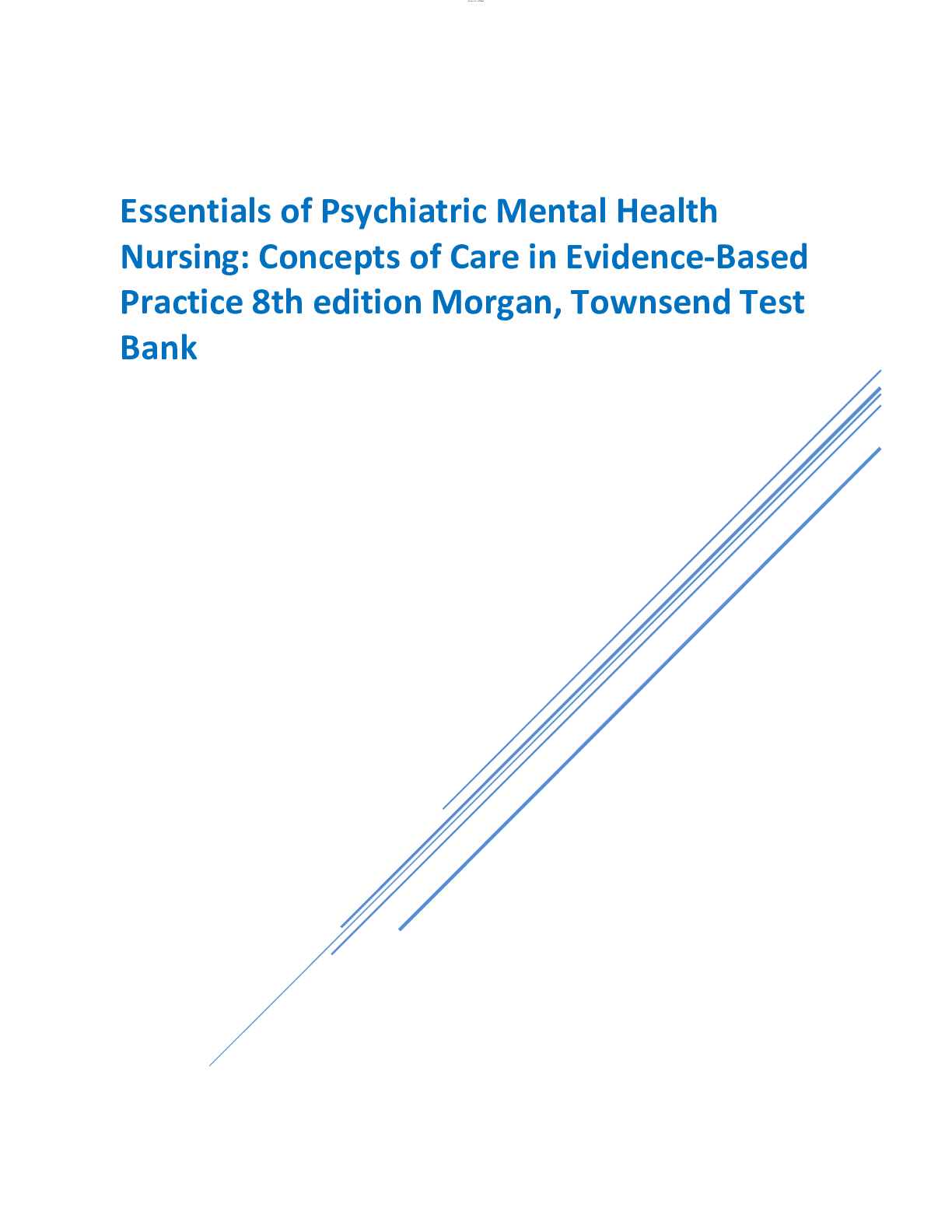
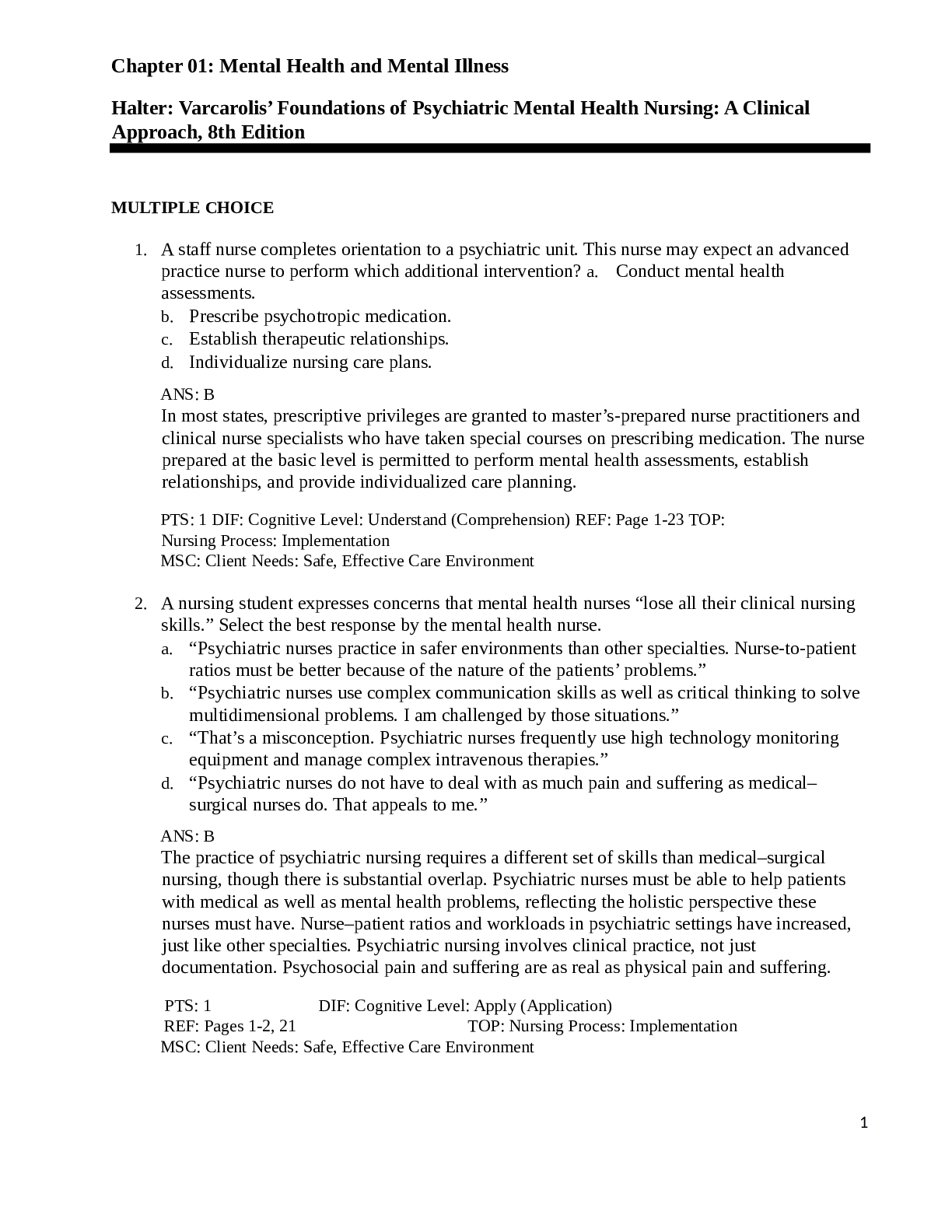

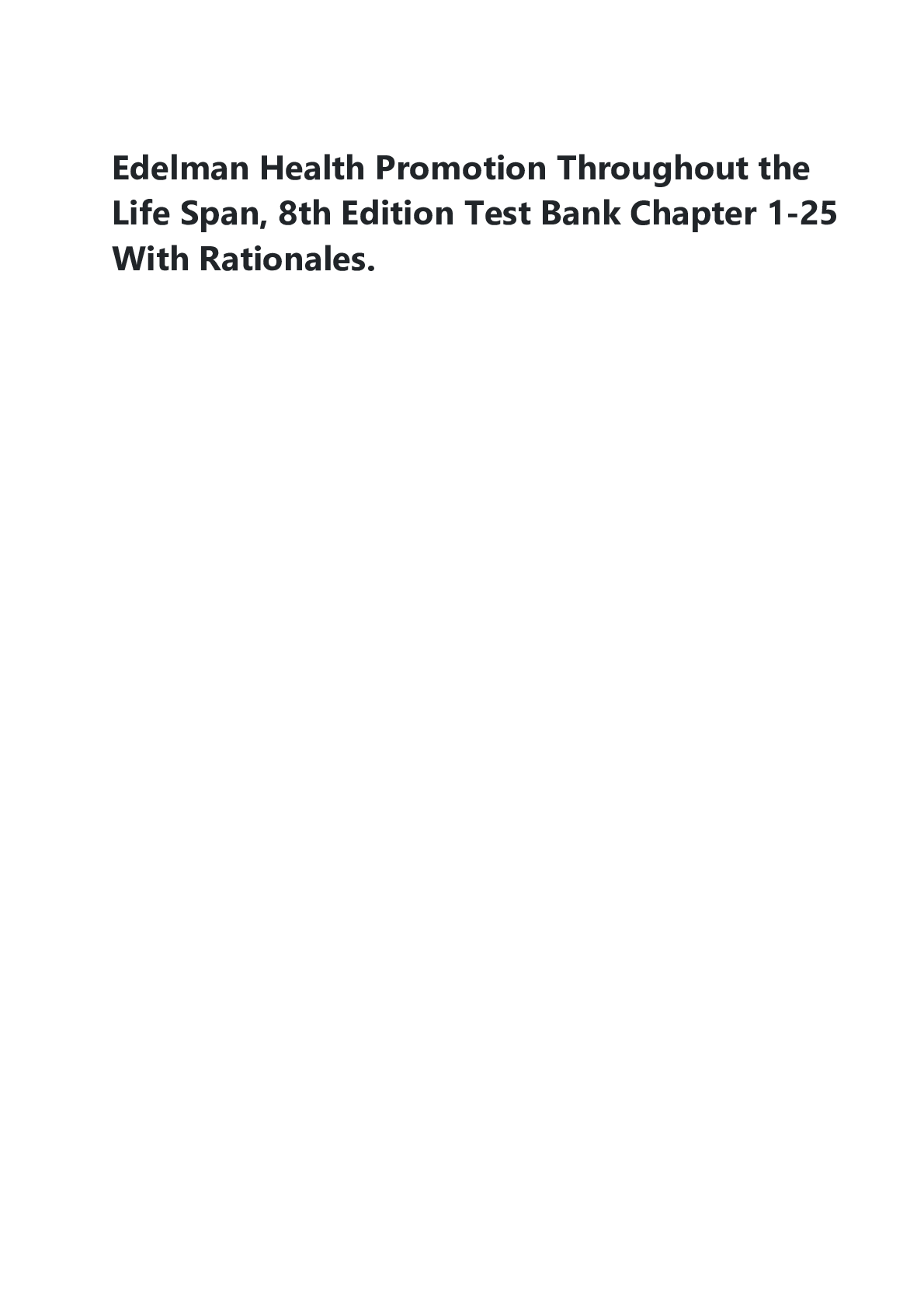
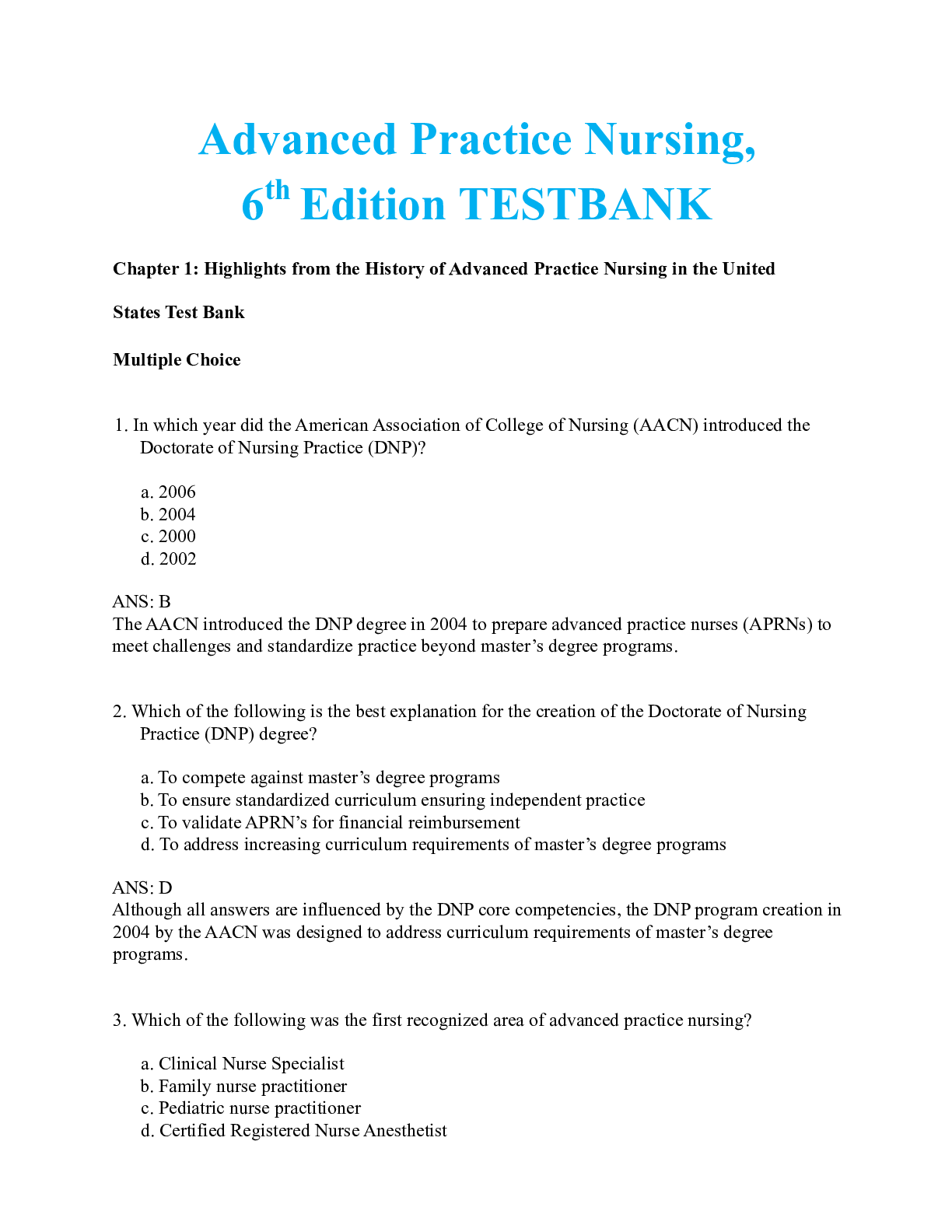
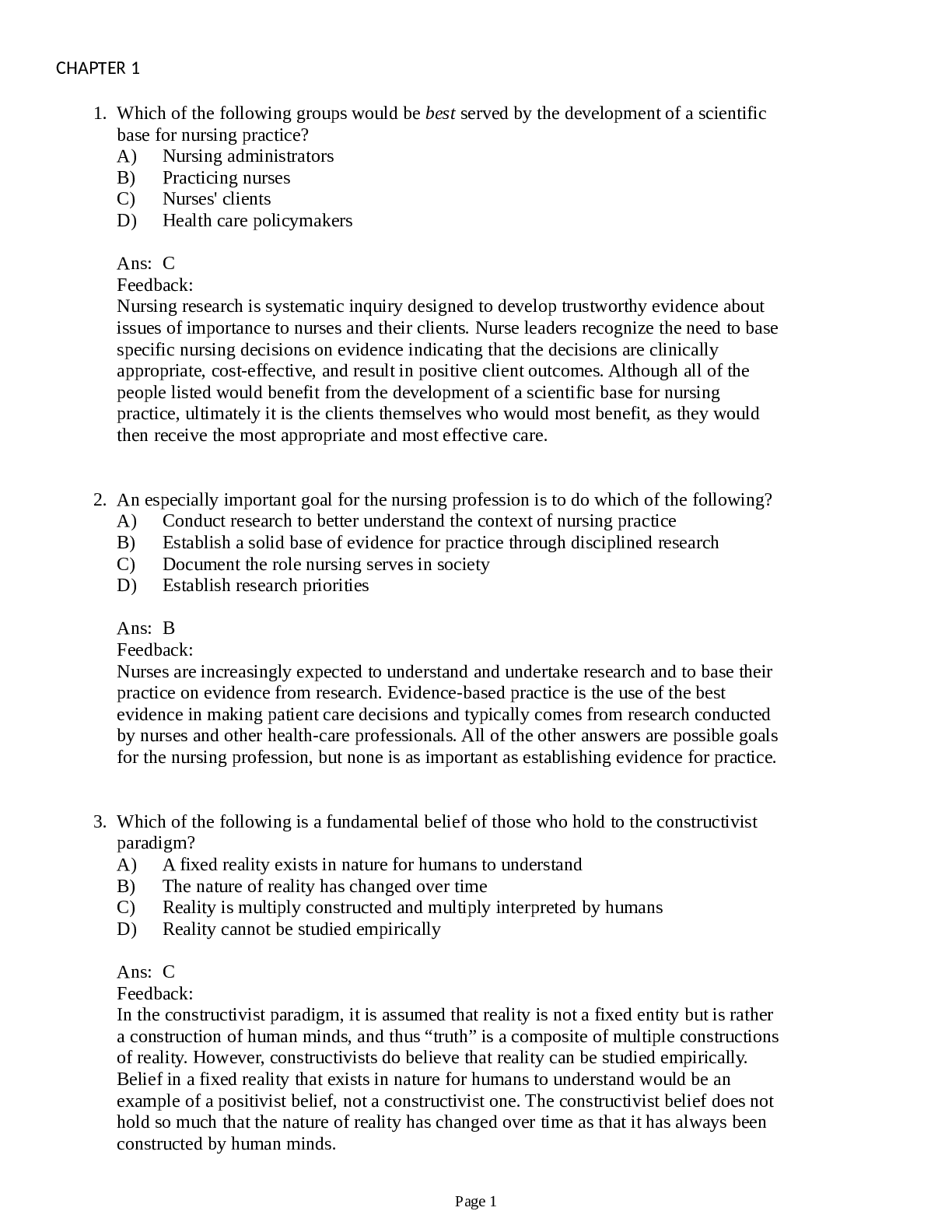
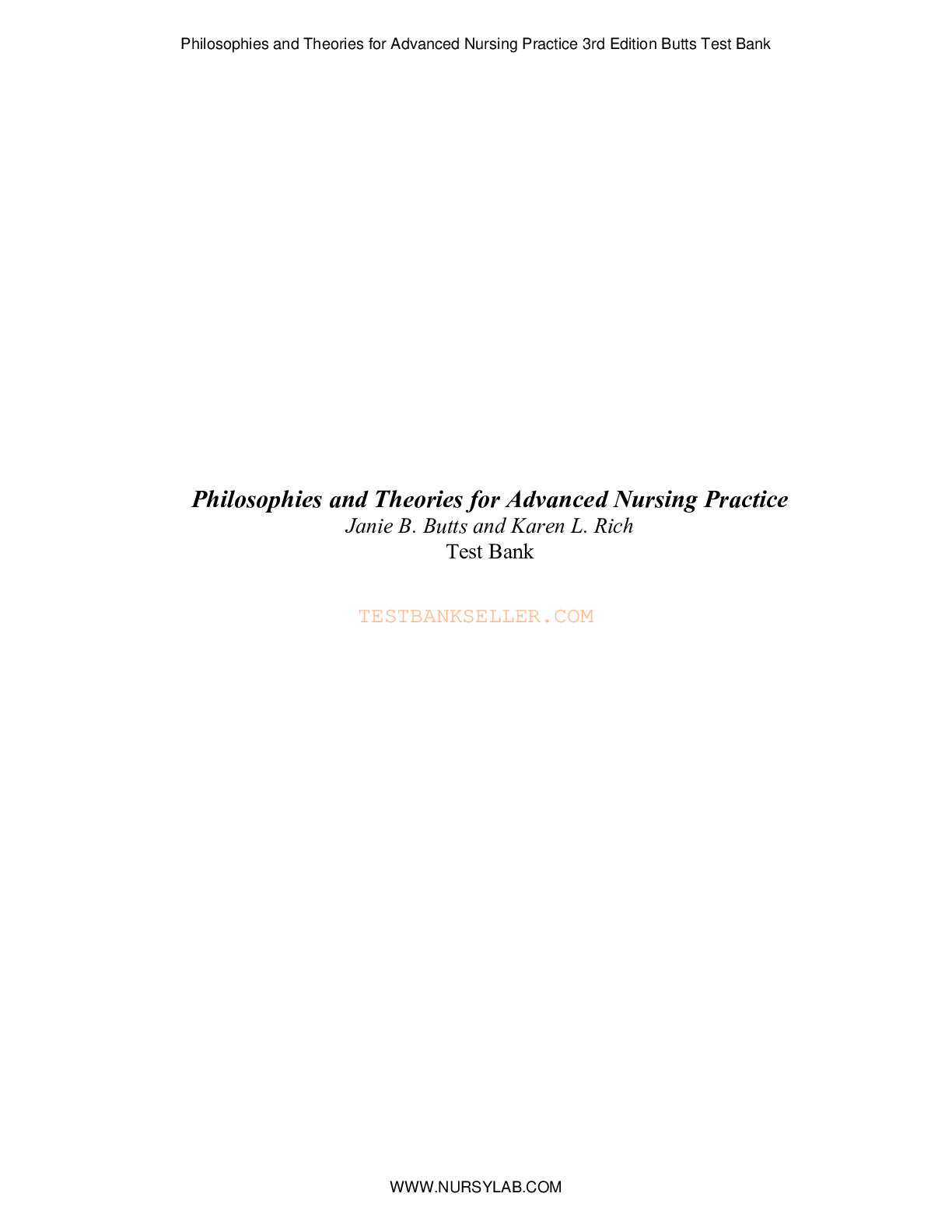
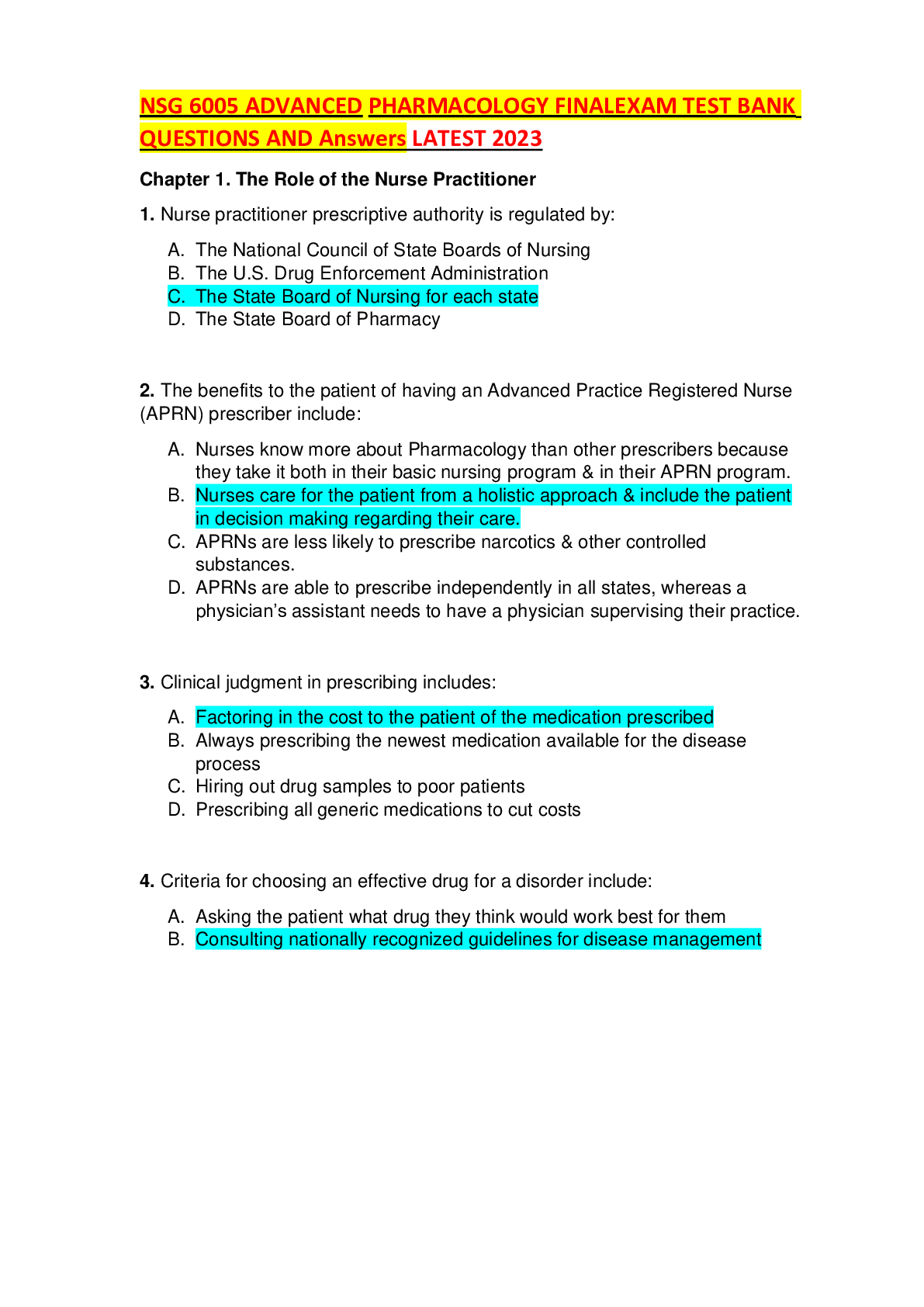
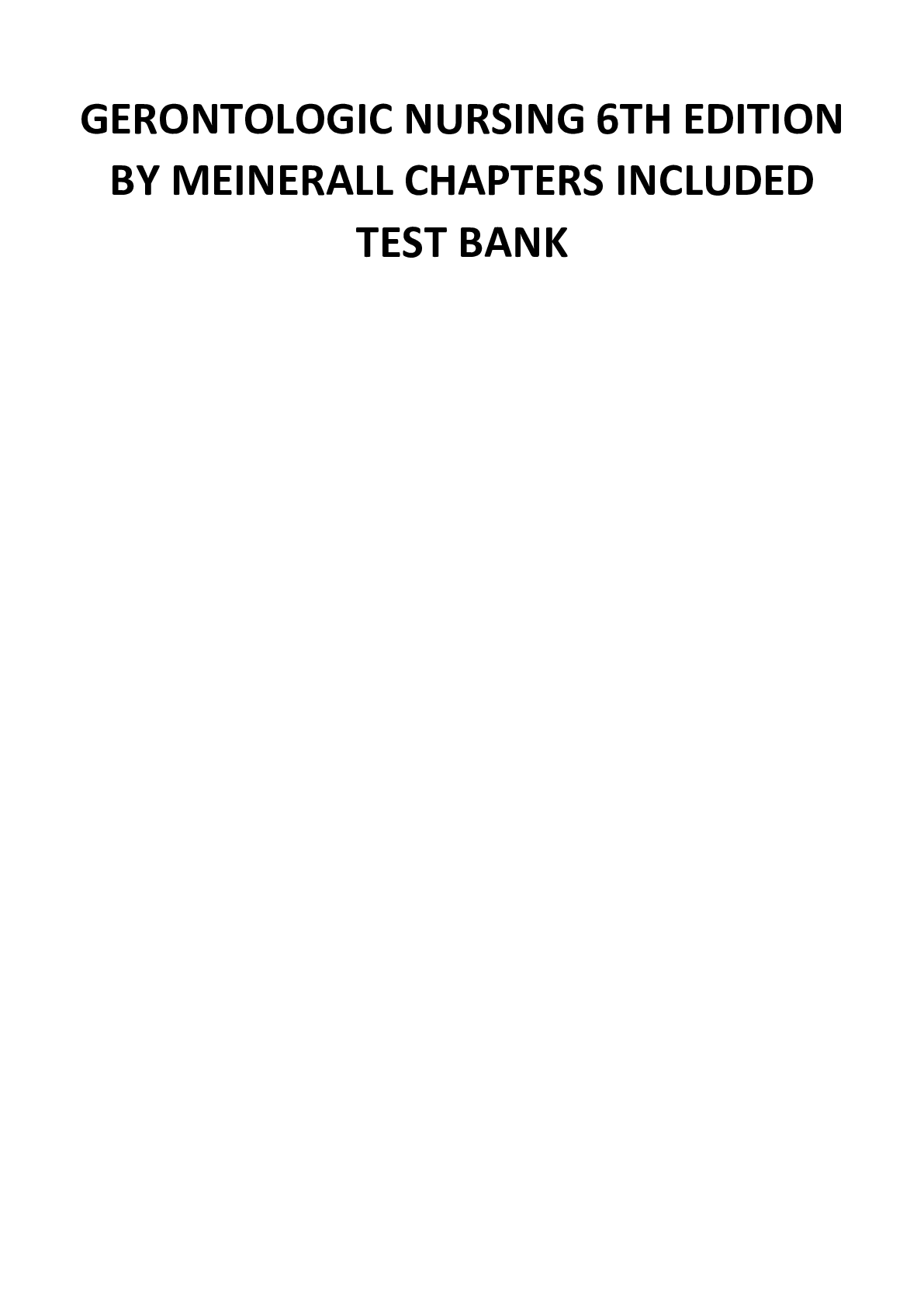
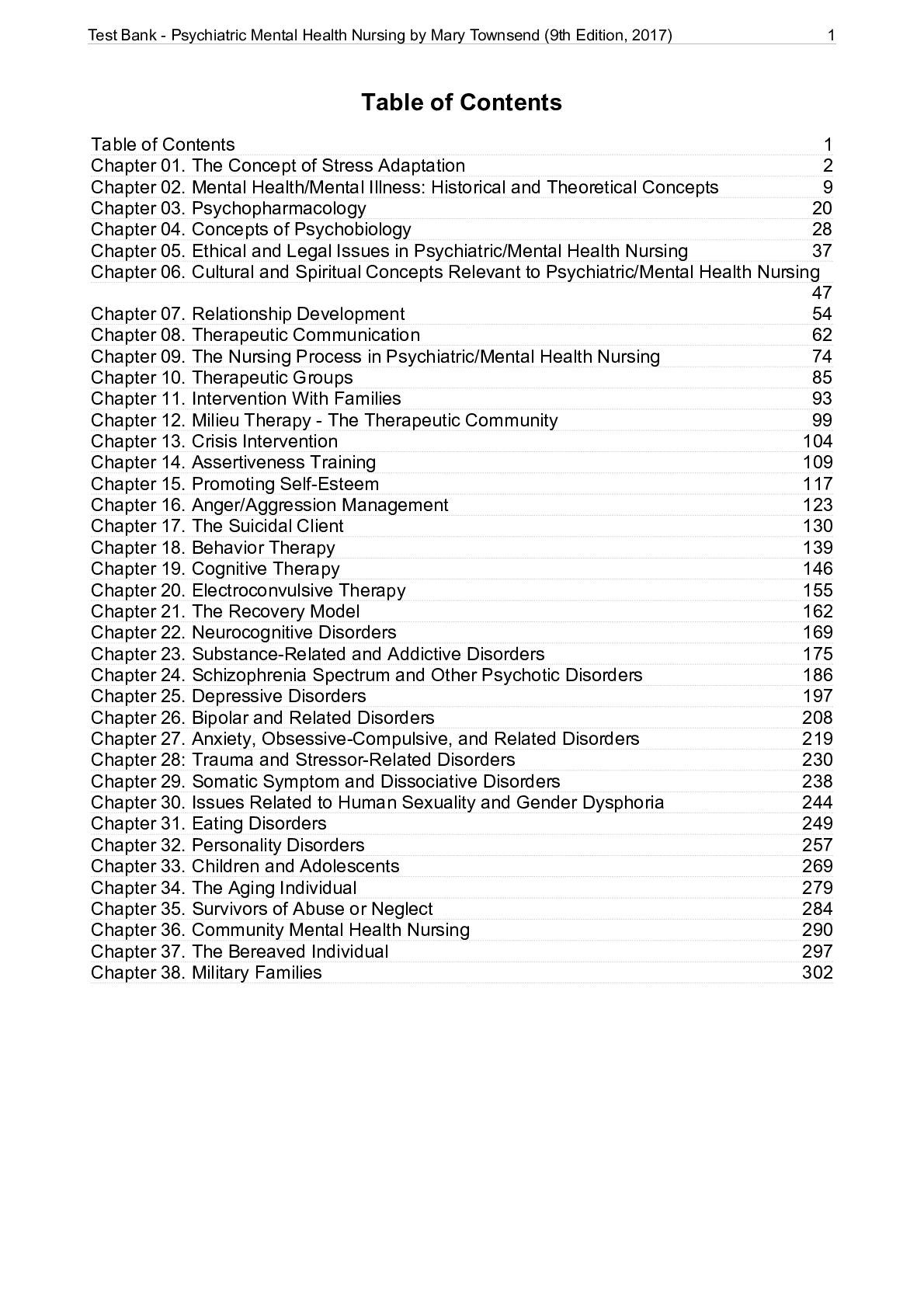




.png)




